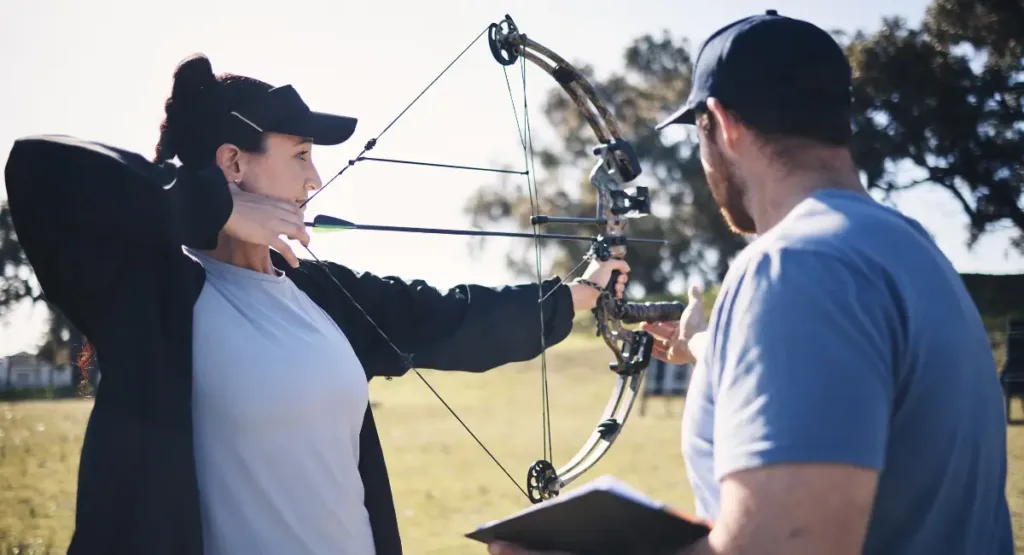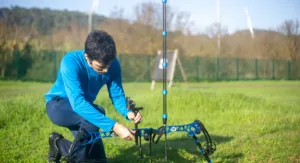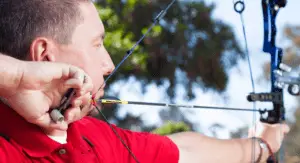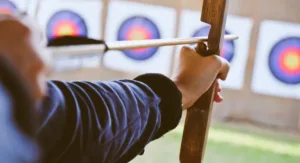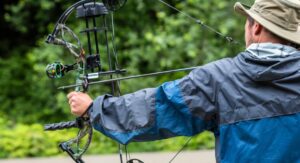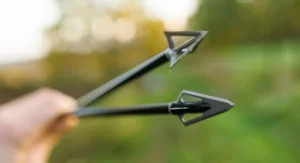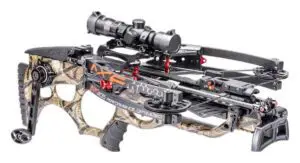You might find compound bow setup intimidating if you have never shot an archery bow before, especially if this is your first time. However, The process can be managed and straightforward by following the proper instructions and a step-by-step approach in the right manner. Whether you’re an experienced archer refining your setup or a beginner trying to set up your first compound bow, this guide aims to equip you with all the necessary information to ensure you can set up a compound bow successfully.
Understanding compound bow setup basics
To set up your compound bow, you’ll need to ensure that you have all the necessary equipment and have a clear understanding of what your compound bow is made up of before starting. In this manner, you can ensure that your setup experience will be more accessible, and you can avoid common mistakes that may affect the performance of your bow in the future.
Step-by-Step Compound Bow Setup
Step 1: Determine Your Draw Length
There is no doubt that your draw length is essential when setting up a compound bow since it ensures that the bow is adjusted to your body dimensions and shooting style. You can determine your ideal draw length by measuring your arm span from the point of your finger to the point of your finger and then dividing it by 2.5. Your draw length is crucial in determining how comfortable and accurate you are when shooting.
Step 2: Adjust the draw weight
Compound bows have different draw weights that can affect your shooting comfort, accuracy, and how you shoot. It is possible to adjust the leg tension using an Allen wrench by turning the bolts clockwise or counterclockwise. Ensure that you read your bow’s manual to understand the recommended settings and ensure that you are within safe limits.
Step 3: Setting Cam Timing and Synchronization
Timing is one of the most critical factors in ensuring a smooth compound bow setup operation. The cams should be synchronized for a uniform and balanced draw so that the cams are working in harmony. As a result, if there are any discrepancies in the performance of the bowstring or the cable lengths, these can be adjusted to ensure optimal performance.
Step 4: Install the Peep Sight
It is essential to align your shots with a peep sight to achieve consistent accuracy. It is recommended that the peep sight be mounted on your bowstring at full draw to align with the line of sight you have when at full draw. There might be a need to adjust your stance and eye level based on the most comfortable position for you based on your unique stance and eye level.
Step 5: Establish Arrow Length
There is a direct correlation between bow accuracy and safety and the length of the arrow. You should measure your chest from the tip of your extended arm to the fingertip of your extended arm, then add an inch to this measurement to determine the correct arrow length for your setup. As a result, you will be able to ensure that it complements your draw length without risking your release.
Step 6: Install the Arrow Rest
A rest will be at the end of your arrow, which will support it until it is released. Ensure you follow the manufacturer’s instructions when installing and aligning the device to ensure that it holds the arrow securely and provides a clear path for the arrow to follow when released.
Step 7: Finding the Correct Nock Point
You will be able to tell where the nock point of your arrow is by the way it clips to the string. Using a T-square to locate the ideal position that aligns with your arrow rest is recommended so that your arrows will fly along a level flight path. For consistent accuracy, this is a crucial step to take.
Step 8: Attach the D-Loop
When you draw your bow, attach the bow release aid to the D-loop to be ready for use. You must ensure you secure the sleeve around the nock point and that it is the proper size for the release mechanism you are using. The way your release is configured has a significant impact on the efficiency and performance of your bow.
Step 9: Paper Tuning Your Bow
As part of paper tuning, an arrow is shot through a sheet of paper to analyze the tear pattern on the sheet. As a result, you can determine the accuracy of your bow and the flight path of your arrow. To achieve a smooth, straight tear, adjust your setup based on the tear results, which will indicate the optimal tuning of your machine.
Wrapping Up Your Compound Bow Setup
While setting up your compound bow, patience and precision are the keys to success. As you follow each step meticulously, you will be able to craft a setup tailored to your archery needs, enhancing your overall archery experience. Take your time and focus on accuracy, as many archers, even the most experienced of them, may need several tries before perfecting their setups.
Frequently Asked Questions
Q: How often should I check my compound bow setup?
If you shoot frequently, or if the bow experiences any impacts, you should regularly check your setup, mainly if you shoot often. A thorough check every few months is recommended, but before each use is ideal, it is good to perform a thorough check before each use.
Q: Can I set up a compound bow myself?
Setting up a compound bow independently is possible, mainly if you use guides like the one shown here. Nevertheless, if you are a beginner, getting guidance from an experienced archer or a professional in an archery shop can be invaluable, mainly if you are new to the sport.
Q: What are the most common mistakes when setting up a compound bow?
Several common bow mistakes can be made, including incorrect draw length and weight settings, improperly installed peep sights, and neglecting to maintain the bow correctly. Ensure that all components of the system are appropriately adjusted and that they are checked regularly for wear and tear.
Q: How does drawing weight affect my shooting?
There is a direct correlation between the draw weight and your ability to pull and hold the string effectively. Using too high or too low a draw weight may hinder accuracy and fatigue; using too high or too low a draw weight may result in less performance. You may need to adjust your exercise amount depending on your strength and endurance level.
Q: Why is paper tuning necessary?
The paper tuning technique determines whether your arrow is flying properly from your bow. As long as the tear is clean and straight, the bow and arrow setup is well-tuned, making your shooting more accurate and consistent.
As long as you follow these guidelines and listen carefully to these frequently asked questions, you’ll be well on your way to getting the most out of your compound bow when you follow these guidelines. It is important to remember that each adjustment you make contributes to your bow’s overall performance and accuracy, so take your time and make sure you make the proper adjustments.
Recent Posts
- Discover The Power Of The Best Archery Stabilizer For Accuracy And Precision
- Archery Release Types – A Comprehensive Guide
- Powerful Backyard Archery Range: Beginner’s Ultimate Guide
- Peep Sight On A Compound Bow : A Comprehensive Guide For Beginners
- Best Crossbow Broadhead: Perfect Arrowhead for Precision and Power
- Axe 405 Crossbow Problems: Overcoming Common Problems

